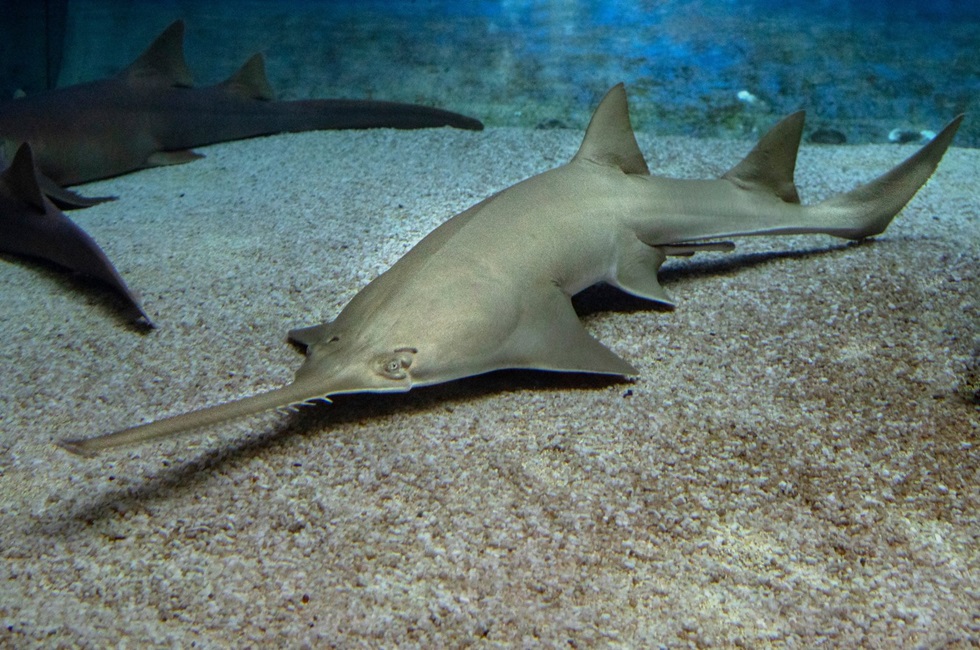
The National Oceanic and Atmospheric Administration (NOAA) is launching an emergency response in Lower Florida Keys waters after reports emerged of smalltooth sawfish displaying abnormal behaviors such as spinning and whirling.
In addition to the abnormal behavior reported by the Florida Fish and Wildlife Conservation Commission (FWC), as of March 24 there were more than 28 deaths of smalltooth sawfish, a press release from NOAA said.
An investigation effort led by the commission — including the collection and analysis of samples — was underway.
“If the opportunity presents itself, this would be the first attempt ever to rescue and rehabilitate smalltooth sawfish from the wild,” said Adam Brame, coordinator of NOAA Fisheries sawfish recovery, as The Guardian reported. “We’re hopeful for positive outcomes from these rescue attempts, and grateful to our partners for their support as we work to protect this endangered species. It’s important to note that active rescue and rehabilitation are not always effective in saving stranded animals. However, it can still give us critical information to learn about the nature of the distress.”
According to FWC, the ongoing compilation of fish necropsy data so far showed no signs of bacterial infection or communicable pathogens. Salinity, dissolved oxygen, pH and temperature were also ruled out as the cause of fish deaths or abnormal behavior.
Smalltooth sawfish live primarily in shallow coastal waters, with one in five species living in tropical estuaries or seas, NOAA Fisheries said.
The critically endangered fish experienced dramatic population decline during the latter part of the 20th century, primarily due to habitat loss caused by coastal development, as well as accidental capture by fisheries.
Once found in waters off the coasts of North Carolina and Texas, smalltooth sawfish are now mostly limited to Florida. In 2003, they became the first ever marine fish to be protected under the federal Endangered Species Act.
“Given the limited population size of smalltooth sawfish, the mortality of at least two dozen sawfish could have an impact on the recovery of this species,” Brame said in the NOAA press release.
Brame stated that a higher number of total mortalities was suspected, however. As of March 24, more than 100 sawfish — large juveniles and adults from seven to 14 feet long — had been impacted by the event.
NOAA planned to rescue the endangered sawfish and bring them to quarantine facilities for observation, with the goal of rehabilitating and releasing them. Agencies offering to house and rehabilitate the fish included Mote Marine Laboratory, Dynastic Marine Associates, Inc. and Ripley’s Aquariums.
“Our goal is to release all rescued sawfish back to the wild once rehabilitated,” Brame said in the press release.
NOAA said it would work with animal care teams, including scientists and veterinarians who would develop specified care guidelines.
This article was reposted from EcoWatch.
We hope you appreciated this article. At People’s World, we believe news and information should be free and accessible to all, but we need your help. Our journalism is free of corporate influence and paywalls because we are totally reader-supported. Only you, our readers and supporters, make this possible. If you enjoy reading People’s World and the stories we bring you, please support our work by donating or becoming a monthly sustainer today. Thank you!










